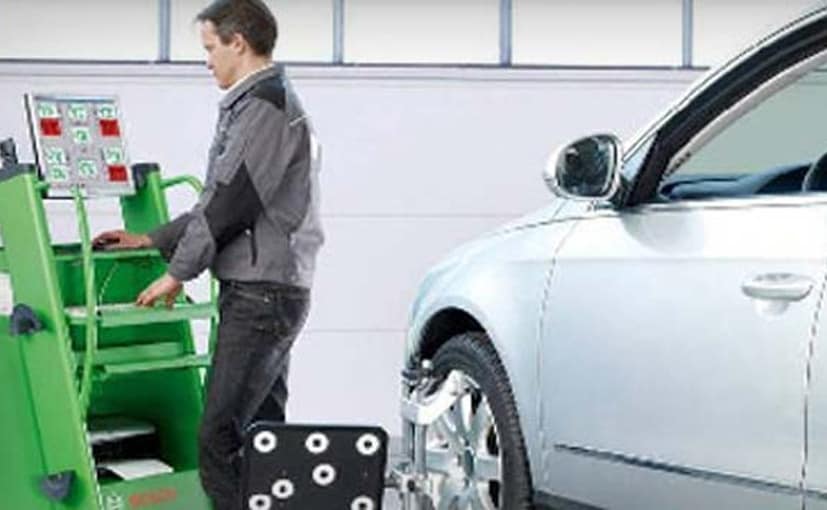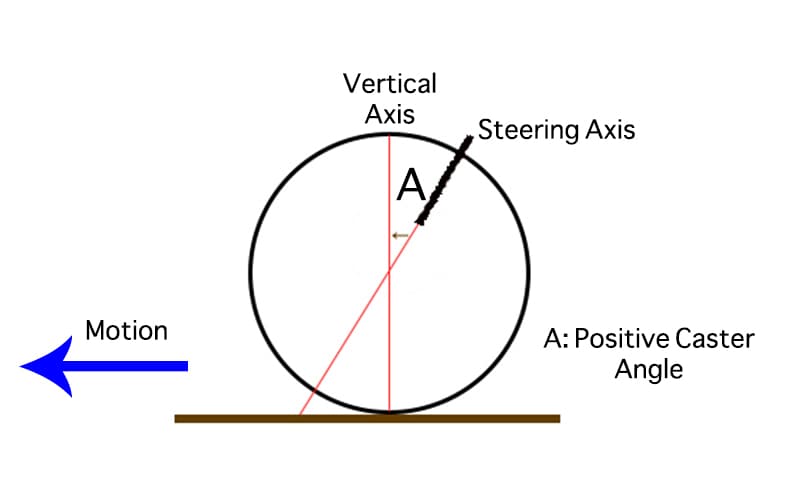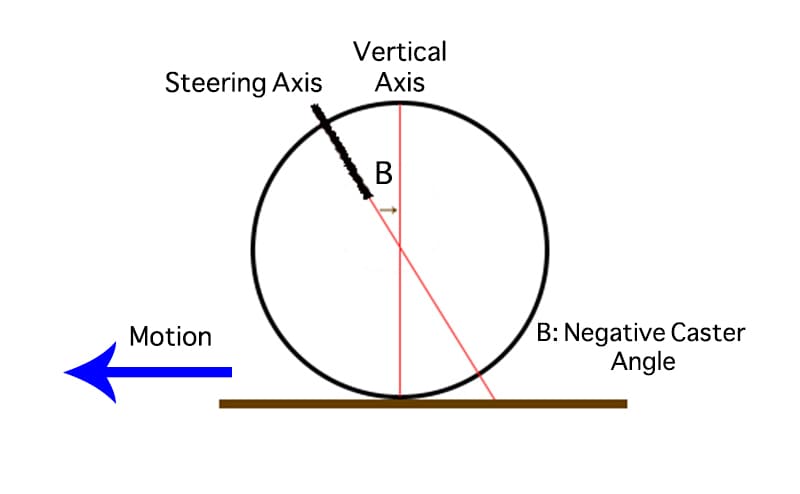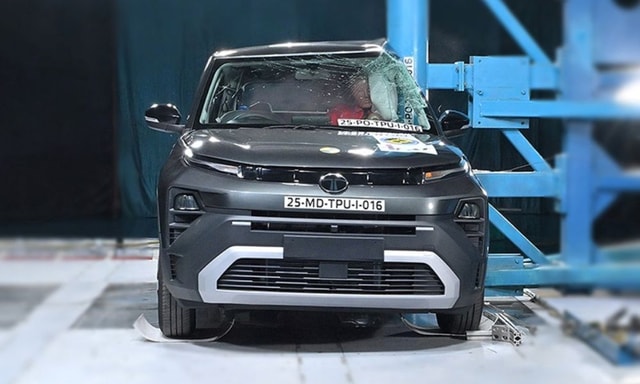Wheel Alignment and Tyre Balancing

Wheel Alignment
Wheel alignment is an issue that comes about due to the gradual weakening of the linkages in a vehicle's steering system and suspension setup. A vehicle with improper wheel alignment can result in a substantial reduction in the tyres' life. Besides standard wear and tear, hitting a bump or driving on bad roads can also sometimes lead to misalignment. Some of the issue's major symptoms include abnormal wearing of different tyres, inability of the vehicle to maintain a straight line or if the steering wheel doesn't return to its original position as easily as it should. If while driving, you observe any of the above issues, it's best to go to a proper tyre centre and get your vehicle's wheel alignment checked. In the case of wheel misalignment, there are three factors that are tested - camber, caster and toe.1) Camber:
Camber misalignment is when the top of the tyres are tilting inwards too much whereas positive camber is when they're tilting outwards at a greater than normal angle. It's caused by the wearing of linkage elements and can lead to abnormal wear and tear of tyres. This issue is fixed by mechanically tightening the linkages or by replacing the worn parts.
2) Caster:
Caster refers to the angle at which the suspension sits on the steered wheel with respect to the vertical axis of the wheel when viewed from the side. Caster angles are adjusted in order to get the steering wheel to centre itself after receiving a steer-input.

Positive caster is when the steering axis ends ahead of the longitudinal axis of the wheel whereas negative caster is when the steering axis angles in from ahead of the wheel's longitudinal axis and ends before it.

Caster angle misalignment issues are caused by the wear and tear of linkage elements such as the strut or control arm and can be fixed by replacement or by re-shaping the bent or worn out component.
3) Toe:
The toe angle is basically the angle between the top-down profile of the wheel and the axis along which straight-line motion is expected to occur. Toe-in and out refer to whether the wheels are excessively pointing inwards or outwards respectively. In the case of cars, the front wheels are always less likely to undergo imbalanced wear and tear due to toe-angle misalignment as compared to the rear wheels because both are connected to the steering system and hence bear equal wear and tear even if they aren't aligned. The rear wheels are individual units so if one is aligned and the other isn't then the difference in wear and tear between both units will be substantial. The toe-angle is adjusted by shortening or lengthening the tie-rod (part of a vehicles steering system).
Tyre Balancing
Proper tyre balancing is another important aspect that helps keep your tyres in good shape. Tyre balancing is performed to check for tyre imbalance. The test is performed by mounting a properly-inflated tyre and wheel setup on a spinning machine which determines the point of imbalance and the point at which weight must be added to fix the tyre balancing issue. Wheel weights are added to the rim to counteract the imbalance before the entire wheel and tyre setup is re-checked on the machine. Loss in balance is caused by the eroding of rubber-mass from the tyres over time.
Also Read: Wheel Alignment: All You Need to Know
Latest News
 Janak Sorap | Jan 21, 20262026 Triumph Trident 660 and Tiger Sport 660 Unveiled; India Launch This YearBased on the setup offered on the Daytona 660, this is the most comprehensive update the Trident and Tiger Sport has received since their introduction.3 mins read
Janak Sorap | Jan 21, 20262026 Triumph Trident 660 and Tiger Sport 660 Unveiled; India Launch This YearBased on the setup offered on the Daytona 660, this is the most comprehensive update the Trident and Tiger Sport has received since their introduction.3 mins read Jaiveer Mehra | Jan 21, 2026New Mercedes-Benz S-Class Previewed Ahead Of Jan 29 Global DebutMercedes says that over 50 per cent of the parts in the upcoming S-class are new, with the car also set to be L4 autonomous driving ready.3 mins read
Jaiveer Mehra | Jan 21, 2026New Mercedes-Benz S-Class Previewed Ahead Of Jan 29 Global DebutMercedes says that over 50 per cent of the parts in the upcoming S-class are new, with the car also set to be L4 autonomous driving ready.3 mins read car&bike Team | Jan 21, 20262026 Jeep Meridian Updated With Sliding Second Row Seats; Prices Start At Rs. 23.33 LakhThe update is limited to select three-row variants of the Jeep Meridian, namely, Limited and Overland.1 min read
car&bike Team | Jan 21, 20262026 Jeep Meridian Updated With Sliding Second Row Seats; Prices Start At Rs. 23.33 LakhThe update is limited to select three-row variants of the Jeep Meridian, namely, Limited and Overland.1 min read Jaiveer Mehra | Jan 21, 2026Skoda Kylaq Classic+, Prestige+ Prices RevealedSkoda has also confirmed a new Sportline variant that will join the lineup later in the year.1 min read
Jaiveer Mehra | Jan 21, 2026Skoda Kylaq Classic+, Prestige+ Prices RevealedSkoda has also confirmed a new Sportline variant that will join the lineup later in the year.1 min read Jaiveer Mehra | Jan 20, 2026Tata Punch Facelift Bharat NCAP Crash Test Scores Revealed; Gets 5-Star RatingFacelifted internal combustion Punch secures 30.58 out of 32 for adult occupant protection and 45 out of 49 for child occupant protection.1 min read
Jaiveer Mehra | Jan 20, 2026Tata Punch Facelift Bharat NCAP Crash Test Scores Revealed; Gets 5-Star RatingFacelifted internal combustion Punch secures 30.58 out of 32 for adult occupant protection and 45 out of 49 for child occupant protection.1 min read Seshan Vijayraghvan | Jan 20, 2026Maruti Suzuki To Invest Rs. 35,000 Crore For Setting Up New Manufacturing Plant In GujaratThe new facility will come up in Khoraj, on 1,750 acres of land provided by Gujarat Industrial Development Corporation (GIDC).2 mins read
Seshan Vijayraghvan | Jan 20, 2026Maruti Suzuki To Invest Rs. 35,000 Crore For Setting Up New Manufacturing Plant In GujaratThe new facility will come up in Khoraj, on 1,750 acres of land provided by Gujarat Industrial Development Corporation (GIDC).2 mins read
 Bilal Firfiray | Jan 21, 2026Tata Punch Facelift Review: New Turbo Engine; Same Old SoulWith the update, the Tata Punch facelift retains its character of being a healthy runabout, which is perfect for Indian roads. But have these changes made it any better?7 mins read
Bilal Firfiray | Jan 21, 2026Tata Punch Facelift Review: New Turbo Engine; Same Old SoulWith the update, the Tata Punch facelift retains its character of being a healthy runabout, which is perfect for Indian roads. But have these changes made it any better?7 mins read Amaan Ahmed | Jan 17, 2026Bajaj Chetak C25 First Ride Review: Basic, Likeable E-Scooter For First-Time RidersThe Chetak C25, in quite a few ways, is poles apart from the larger and more powerful 30 and 35 Series models, but in its mannerisms, it is very much a Chetak.8 mins read
Amaan Ahmed | Jan 17, 2026Bajaj Chetak C25 First Ride Review: Basic, Likeable E-Scooter For First-Time RidersThe Chetak C25, in quite a few ways, is poles apart from the larger and more powerful 30 and 35 Series models, but in its mannerisms, it is very much a Chetak.8 mins read Bilal Firfiray | Jan 9, 2026Toyota Urban Cruiser Hyryder: 10,000 km Long-Term ReviewAfter spending over three months and 10,000 km with the Toyota Urban Cruiser Hyryder Hybrid, we were impressed by its real-world mileage, seamless hybrid, practical comfort, and Toyota reliability. Is it the best C-SUV then?5 mins read
Bilal Firfiray | Jan 9, 2026Toyota Urban Cruiser Hyryder: 10,000 km Long-Term ReviewAfter spending over three months and 10,000 km with the Toyota Urban Cruiser Hyryder Hybrid, we were impressed by its real-world mileage, seamless hybrid, practical comfort, and Toyota reliability. Is it the best C-SUV then?5 mins read Seshan Vijayraghvan | Jan 8, 20262026 Mahindra XUV 7XO Review: Big On Tech, Bigger On ComfortThe new Mahindra XUV 7XO is flashier, feature packed, and comes with more advanced tech. But are the changes just incremental or actually substantial?1 min read
Seshan Vijayraghvan | Jan 8, 20262026 Mahindra XUV 7XO Review: Big On Tech, Bigger On ComfortThe new Mahindra XUV 7XO is flashier, feature packed, and comes with more advanced tech. But are the changes just incremental or actually substantial?1 min read Preetam Bora | Jan 10, 2026Simple One Gen 2 First Ride Review: 265 km Claimed Range!The Gen 2 model of Simple Energy’s first electric scooter gets a fair few updates, including new features, tech, more range and lighter weight. We spent a couple of hours with the Simple One Gen 2 to find out if it manages to impress.6 mins read
Preetam Bora | Jan 10, 2026Simple One Gen 2 First Ride Review: 265 km Claimed Range!The Gen 2 model of Simple Energy’s first electric scooter gets a fair few updates, including new features, tech, more range and lighter weight. We spent a couple of hours with the Simple One Gen 2 to find out if it manages to impress.6 mins read


















































































































